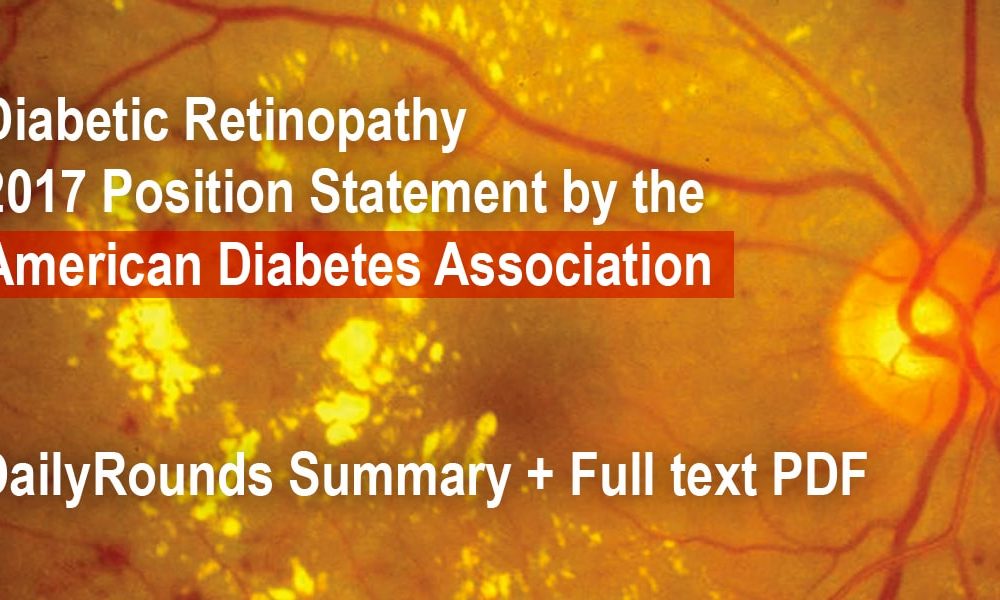
Diabetic Retinopathy 2017 Position Statement
The American Diabetic Association in the March 2017 has released a position statement on Diabetic Retinopathy. This is update on the 2002 recommendations by the ADA. The following is the summary of the recommendations.
A full PDF version can be accessed here: https://dhmbxeygs57ff.cloudfront.net/uploads/ea7f7bfc884444d6a4c3a24450cfef89.pdf
Summary of the 2017, ADA recommendations on diabetic retinopathy
1.Optimize the following to reduce the risk or slow the progression of diabetic retinopathy
- Glycemic control
- Blood pressure
- Serum lipid control
Screening
- Adults with type 1 diabetes
- 5 years after the onset of diabetes
- Comprehensive eye examination by an ophthalmologist or optometrist
2.Type 2 diabetes
- At the time of diagnosis of type 2 DM
- Comprehensive eye examination by an ophthalmologist or optometrist
Frequency of Screening
- If there is no evidence of retinopathy for one or more annual eye exams
- examination every 2 years may be considered
2.If any level of diabetic retinopathy is present
- At Least annual screening by an ophthalmologist
3. If retinopathy is progressing or sight-threatening
- More frequent screening
Pregnancy
- Women with preexisting type 1 or 2 diabetes planning a pregnancy should be counseled on the risk of development and/or progression of diabetic retinopathy.
- Eye examinations should occur before pregnancy or in the first trimester in patients with preexisting type 1 or type 2 diabetes
- then monitored every trimester
- and for 1 year postpartum as indicated by the degree of retinopathy
Retinal photography
- May serve as a screening tool
- NOT a substitute for a comprehensive eye exam
Treatment
- Promptly refer all patient with the following to an ophthalmologist who is knowledgeable and experienced in the management and treatment of diabetic retinopathy.
- any level of macular edema
- severe nonproliferative diabetic retinopathy (a precursor of proliferative diabetic retinopathy)
- or any proliferative diabetic retinopathy
2. Laser photocoagulation therapy reduces the risk of vision loss in patients with
- high-risk proliferative diabetic retinopathy
- in some cases, severe nonproliferative diabetic retinopathy
3. Intravitreous injections of anti–vascular endothelial growth factor are indicated for central-involved diabetic macular edema, which
- occurs beneath the foveal center
- and may threaten reading vision
4. Aspirin does not increase the risk of retinal hemorrhage
- presence of retinopathy is not a contraindication to aspirin therapy for cardioprotection